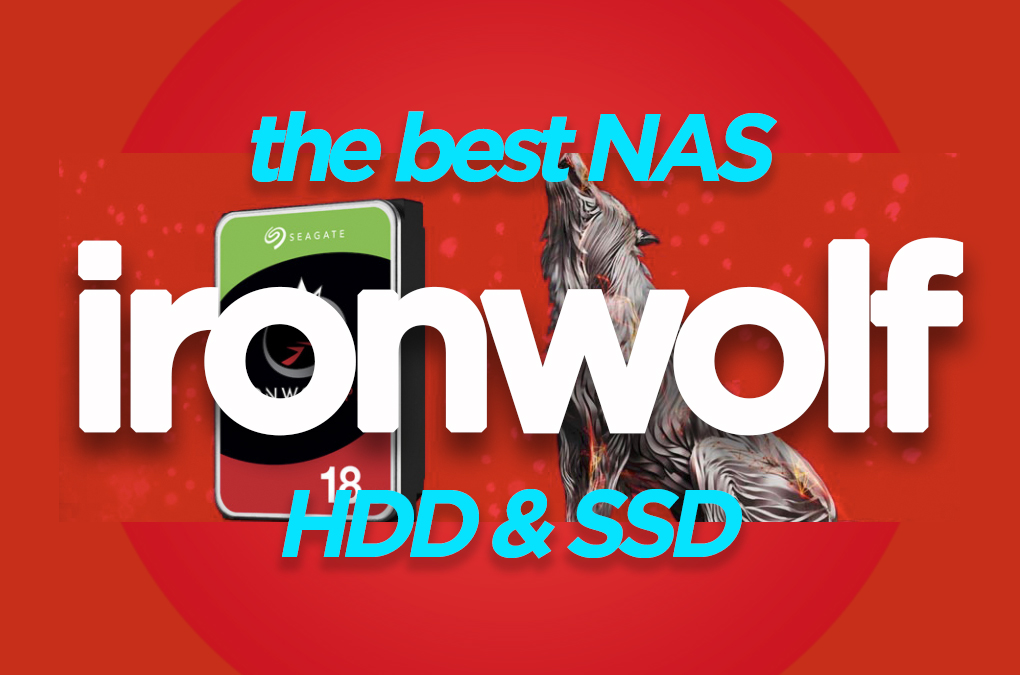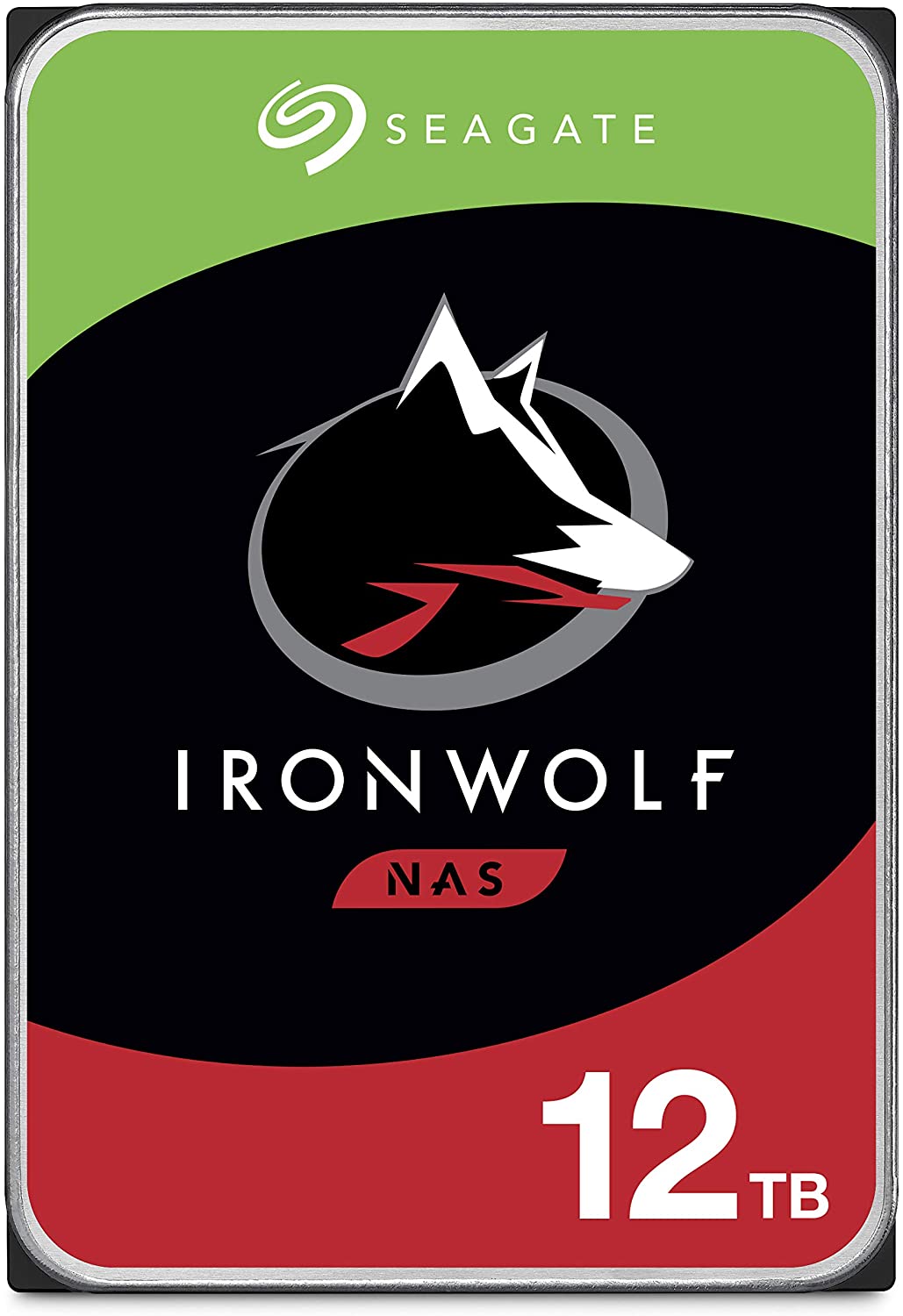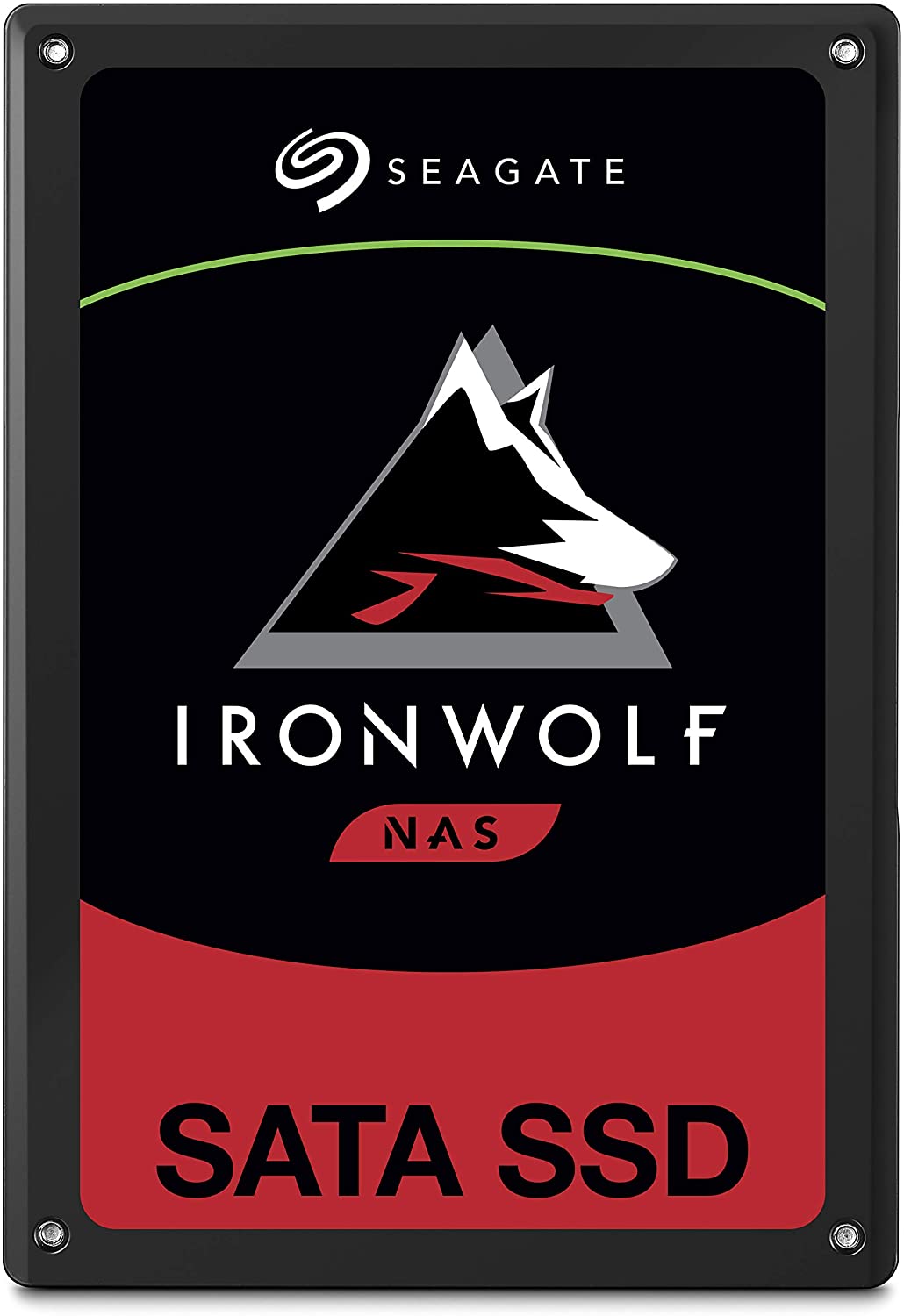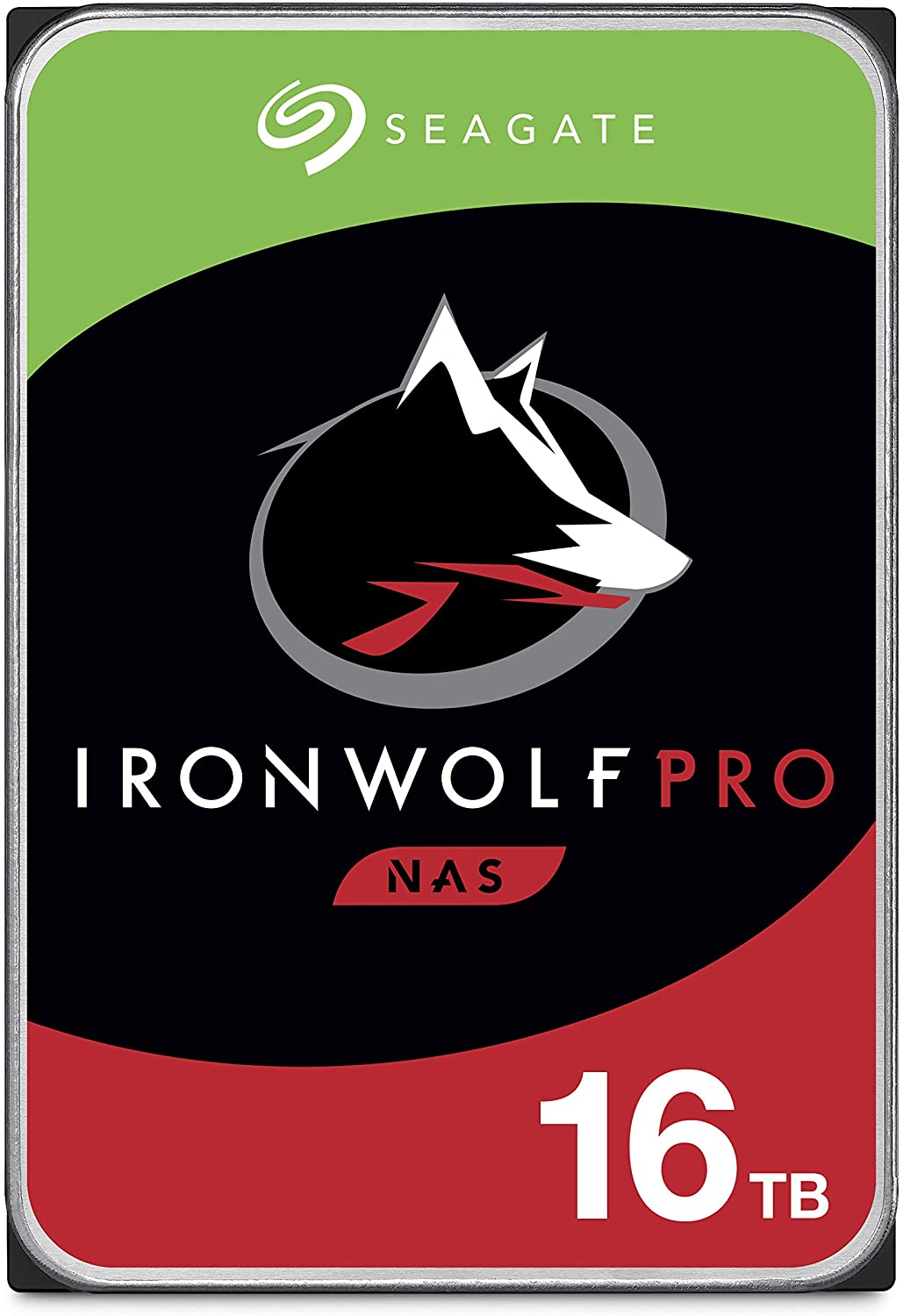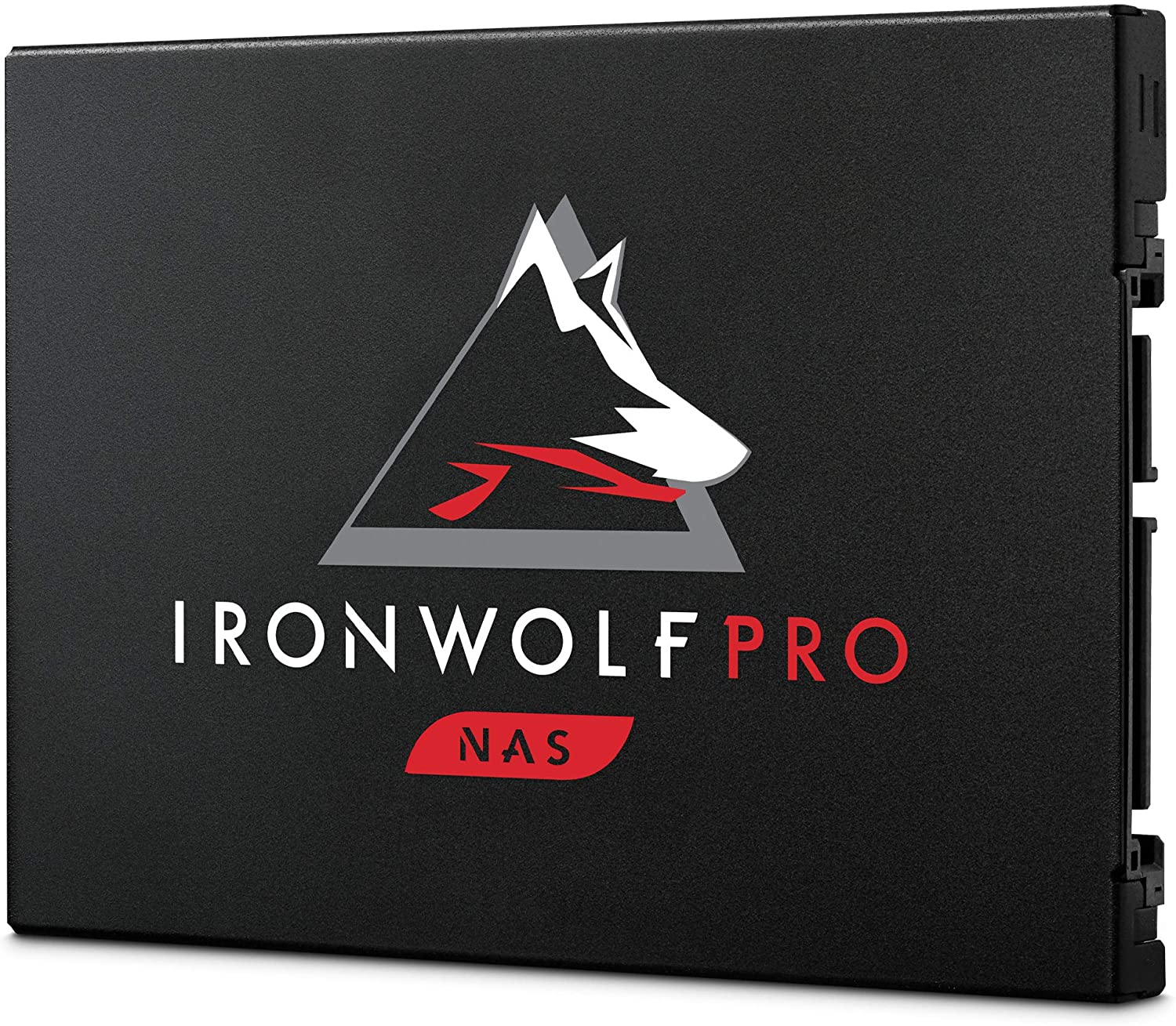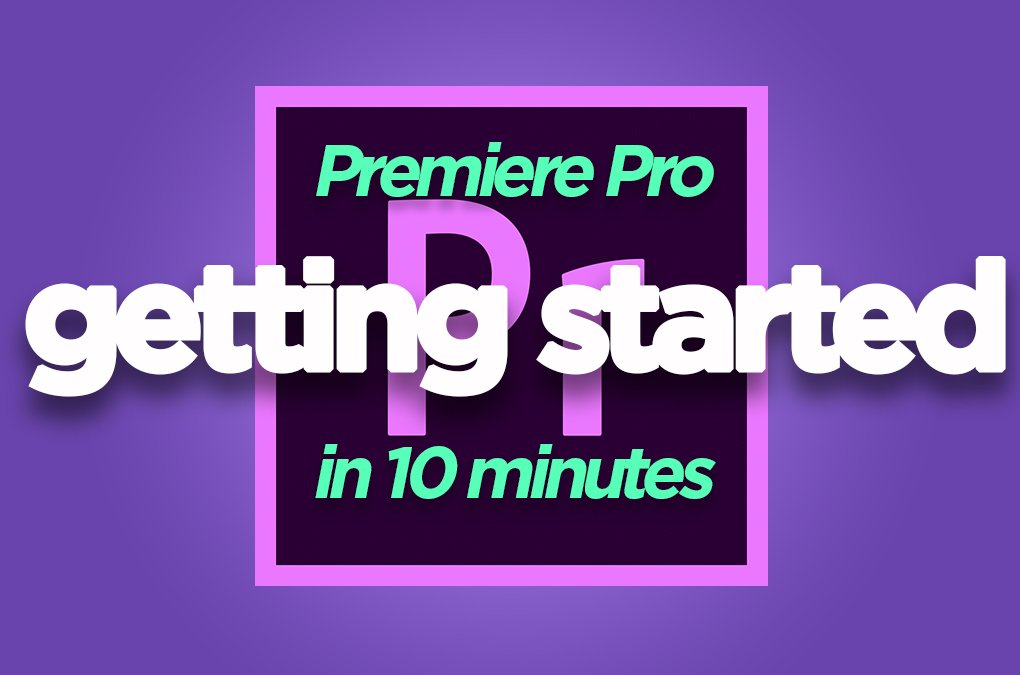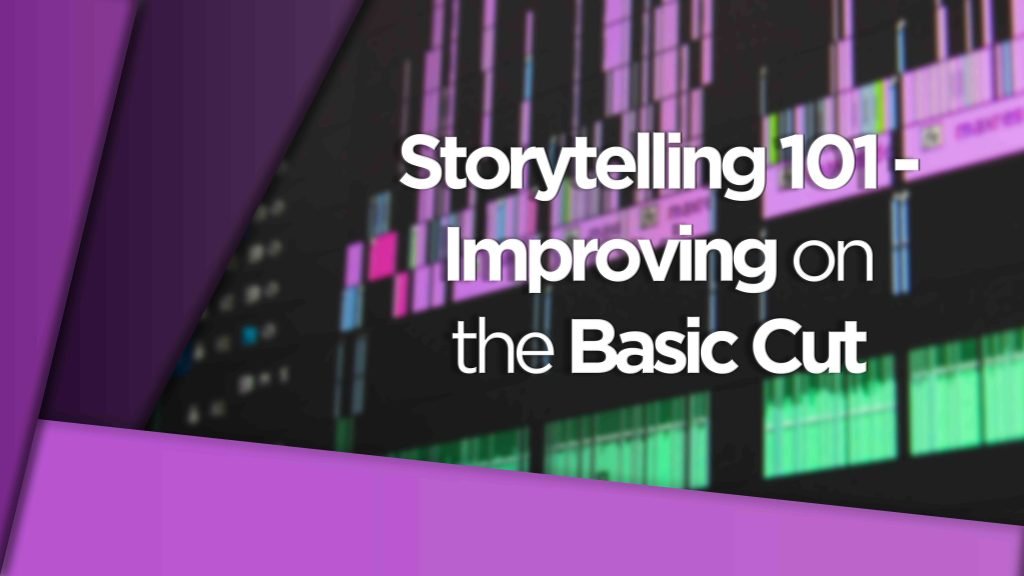Which is the Best NAS HDD or SSD for a Video Editing NAS? IronWolf of Course!
If you’re here then you probably already either have a NAS and are looking to change out or upgrade your HDD/SSDs. Or potentially you are looking at getting a NAS for video editing and want to know which HDD or SSD NAS drive to get.
In either case you’ve come to the right place.
I’ve covered this post in smaller detail for Synology and QNAP NASs but I’m going to go into more depth here, to help explain to you why I think IronWolf drives are the best NAS HDD choice for your video editing NAS.
And let me first state that I’m not sponsored by Seagate for this article, I do genuinely use these drives and believe them to be a superior build quality over other brands and models.
Watch the Video
How do I know what I’m talking about? Head to the DigiProTips Experience and Background page to find out how I’ve built up my knowledge over a career spanning feature film, broadcast TV and digital content production.
Why Does the Type of NAS Drive Matter?
It matters because not all hard drives are created equally. They are in fact created for different, very dedicated, purposes. Some hard drives are made for ‘always-on’ uses, such as in security CCTV NAS systems, some are made for generic and low-level users and others are made for more intensive and speed-driven purposes. The latter is what we, as video professionals, are after.
The internal mechanics of hard drives determine their uses and the prices also reflect these.
You do also have the choice between HDD and SSD to make as well. HDDs typically hold more data and are cheaper but they also do not last as long as SSDs, which are faster and smaller but hold less data and are significantly more expensive (though this is coming down each year).
Seagate

Who are the manufacturers of IronWolf drives? They’re made by a well known and trusted computer hardware company called Seagate.
Seagate has been making computer storage components for 40 years but has by and large been the underdog in this space (in my opinion). Their drives have always been middle of the road and affordable but never truly groundbreaking. That was until they released the IronWolf and other ‘Pro’ level storage series.
These ‘Pro’ level storage drives all have striking names for the products, including ‘IronWolf’, ‘FireCuda’ and ‘BarraCuda’. And it’s fair to say that they all also deliver on their ‘Pro’ status and price tag.
They are well-built, reliable, and durable. All things you want the best NAS HDD to be.
And all things you do pay a premium for in the tech hardware world.
I would say that, as a result, Seagate has positioned itself as one of the leading computer storage companies in recent years.
Competitors
Of course, it’s not just Seagate in the NAS storage game. One of the best-known competitors is Western Digital, with their own range of NAS HDDs known as WD Red drives.
Up until recently, WD was the top seller and most trusted brand for NAS drives. Then a couple of years ago things started to change. Newer disks being purchased from the brand were starting to fail and causing corrupted data issues for users.
Anecdotal evidence pointed towards a factory change in the manufacturing process. Unable to know whether WD drives would be stable long term caused users to abandon the brand in favor of others, including Seagate.
HDD or SSD
As I mentioned above, the decision whether or not to go HDD or SSD for your NAS storage is not an easy one. You want the best storage possible for your budget and you, ideally, don’t want to have to change it again for a long time.
Unfortunately, there isn’t one perfect answer to the conundrum and is very much down to your budget constraints and ultimately, what you are intending to do with your NAS day-to-day.
HDD
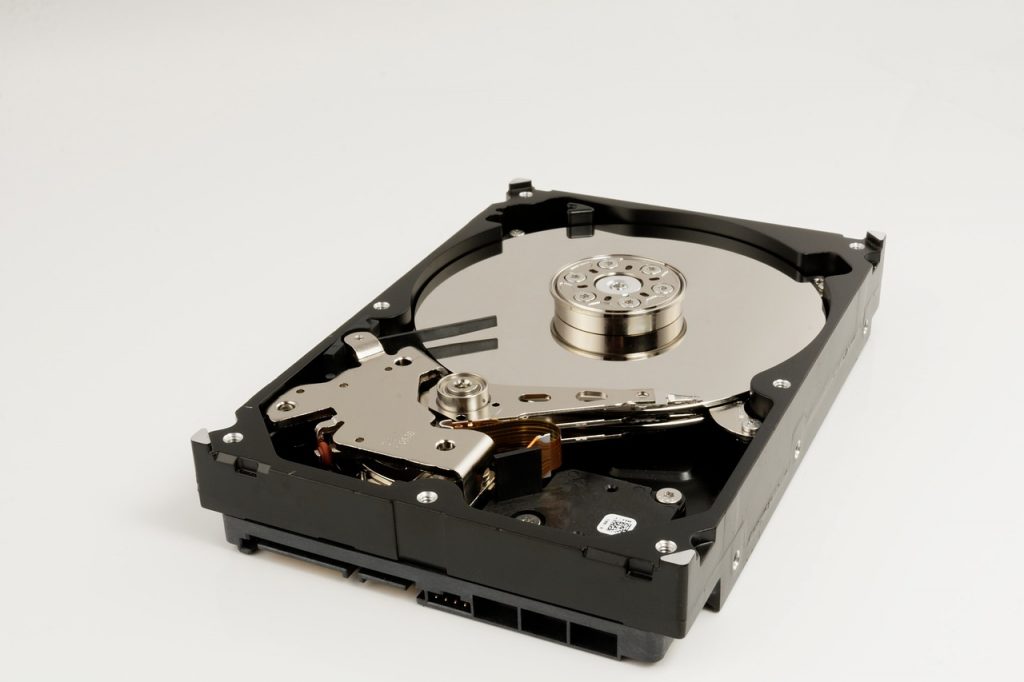
Mechanical hard disk drives (HDD) are the traditional format of hard drives. They were invented by IBM over 50 years ago now and are very cheap compared to their newer counterpart, SSDs.
HDDs can usually be bought in either 5400 or 7200rpm varieties, though they do come in 9600 and even 15,000rpm as well. These numbers are a direct comparison of how fast the disk spins inside the closure. The faster, the better.
For anyone reading this tempted with cheaper 5400rpm disks, I can only advise that you increase your budget for 7200rpm or reduce the number of disks to afford 7200rpm. 5400rpm disks are far too slow for video editing from network storage. 7200rpm HDDs are the lowest end of the scale that you should be looking at, they deliver data around 33% time faster than 5400rpm disks. In fact, brands are now starting to ditch production of 5400rpm drives entirely.
The one main advantage of HDDs, aside from their price, is that they can hold a tremendous amount of data.
Back when I first started using NAS systems they were only capable of using HDDs up to about 8TB and manufacturers didn’t make disks much bigger than that anyway. Now, however, you can buy disks as big as 32TB and NAS enclosures very comfortably use 16TB and above drives these days.
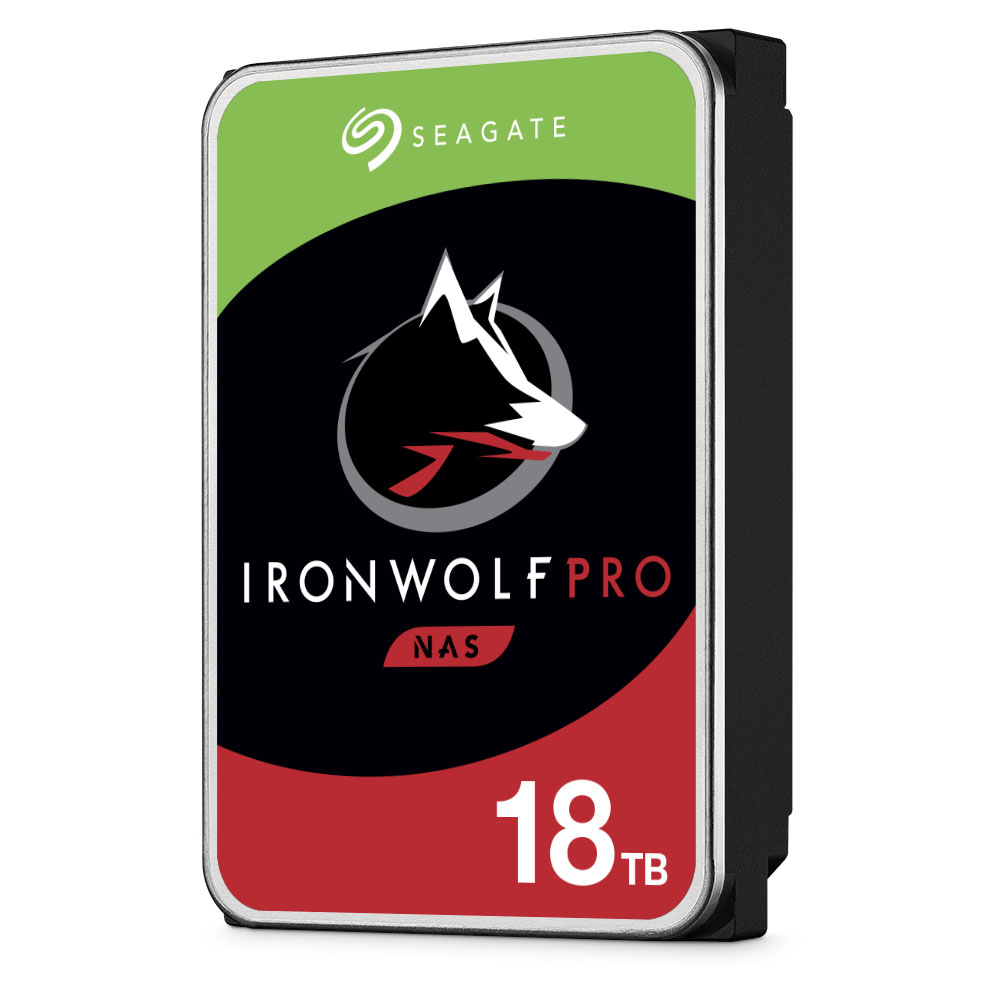
That’s a lot of data when you have multiple bays to fill on your NAS. It can easily be in the hundred TB range.
Now, the main downside to HDDs is that they are nowhere near as fast as SSD. Also, they don’t last forever (though neither do SSDs technically). Because you have to manually spin a disk to read its contents you are never going to compete with a chip that holds all of its data without any mechanical parts to it.
When looking at video editing we want the fastest storage possible. That is never going to be HDD.
However, that doesn’t mean we shouldn’t buy HDDs (in fact, I would argue that you should for any startup or small scale business getting into this). There is a scenario within which you can use both HDDs and SSDs together in harmony for a super quick storage volume with longevity and price factored in, it’s called an SSD cache and I’ll talk about that very shortly.
SSD
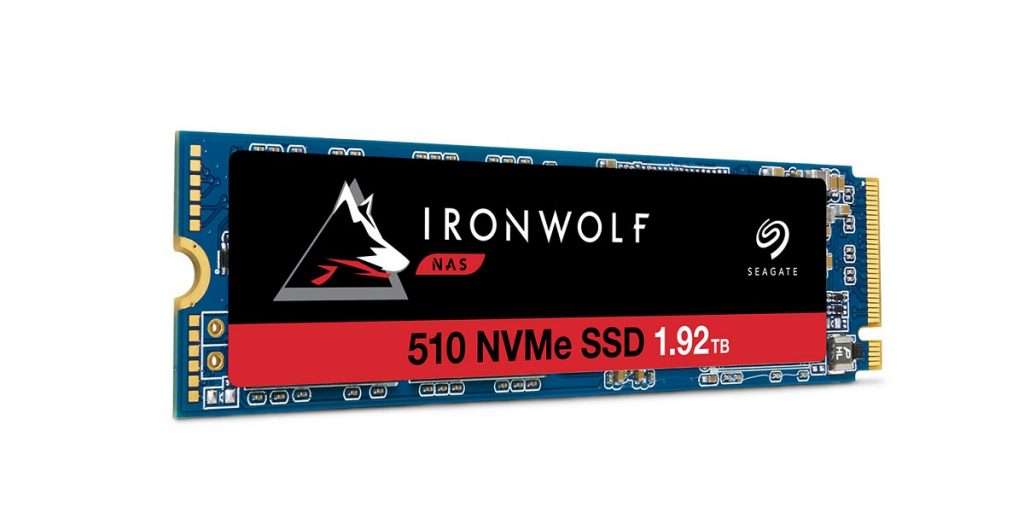
Solid-state drives are the ultimate storage medium for consumers right now. And since they first came to market you can now buy them in two varieties; SATA and M.2 formats.
M.2 is the fastest connection method for an SSD (and luckily most SSD caches now use this connection type). SATA is the slowest but having said that it is still much faster than a 7200rpm hard drive.
Solid-state drives are exactly what they sound to be, solid, non-moving, internal drives that pass data between hard-mounted chips. They are also known as NAND storage.
Solid-state drives as so much faster than HDDs because of this factor that it’s not even really comparable. A conventional SSD can move data 3-4 times faster than an HDD (around 500MB/s) and newer NVMe SSDs are even 20 times faster at 3,000-3,500MB/s.
This sounds very impressive, which it is but it also comes with a price tag.
1TB costs
What is the lifespan of an SSD?
Well, it’s still hotly contested but an SSD cell usually has around 3,000 write cycles. This doesn’t sound like much at first but the controller of an SSD disk is very good at using cells as efficiently as possible to avoid ‘cell death’. Even if you were to read and write to an SSD 24 hours a day it should still last you decades.
SSD Cache – The Best SSD NAS Drive Setup
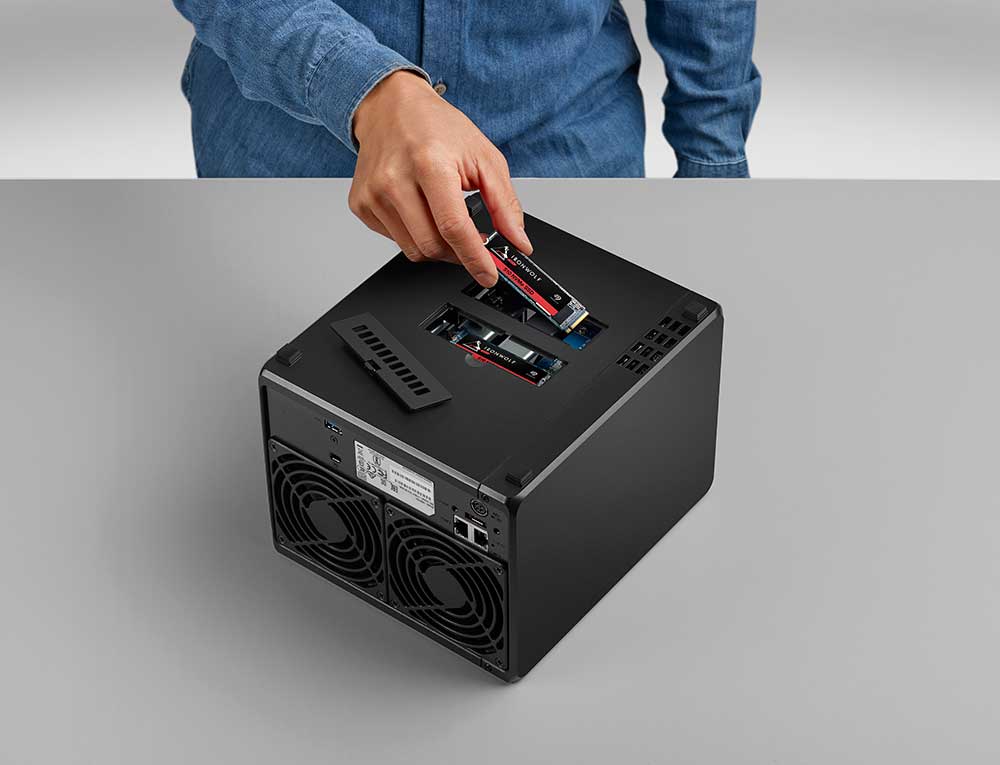
Right, so what is this great technology called ‘SSD caching’?
Well, in the most basic terms it is using both SSD and HDDs in a NAS and only using the SSD for the most used data, storing untouched or less used data, on the slower HDDs.
The NAS enclosure cleverly decides how often you access certain data within it and moves that data to either the SSDs or HDDs. This means you can have a big chunk of lower-cost HDD storage and a smaller but much faster chunk of SSD storage for your most frequently accessed data.
It’s a win-win!
Why Invest In Higher Quality NAS disks?
This is the crucial question and the answer is simple, for peace of mind.
Having worked with NAS systems for the past decade and having worked with a variety of models and disk types I can tell you that you cannot put a price on data security.
I have had the unfortunate experience of losing 40% of my data to corruption purely down to using a cheaper disk brand (non-branded import) to save money. If it hadn’t been for a fairly recent off-site back up I would have lost everything. The BTRFS system (a sort of RAID version) failed with an expansion of disks and corrupted all the other disks in the system.
Losing that data irreversibly was a painful situation to be in. From then I always looked for and used the best NAS HDD or SSD NAS drive I could find for the money the company had available.
I can honestly say that so far I have not had an IronWolf disk go bad on me yet.
So, for me IronWolf are the best NAS HDD and SSD NAS drives you can get.
So Then, After All That, Which IronWolf Drives Are The Best NAS HDD or SSD to Buy?
Well as I said above, WD doesn’t seem to be the most reliable, so it’s got to be Seagate for me. Seagate offers a range of HDD and SSDs on their pro range, namely; FireCuda, Barracuda, and IronWolf.
It’s the latter we want as they are designed for NAS storage rather than desktop or laptop PC storage.
DISCLAIMER: This post may contain affiliate links. We make a small commission if you buy the products from these links (at no extra cost to you). As an Amazon Associate, I earn from qualifying purchases. But we only recommend products we would use ourselves. For more information, click here to see our disclosures.
Smaller NAS Systems – 1 to 4 bays
IronWolf Best NAS HDD
For smaller NAS systems the best IronWolf NAS HDD I could recommend is the top end 12TB Ironwolf HDD (7200RPM).
This is the largest size that Seagate does in the normal Ironwolf model. You want the most storage space for your money, so go for the most your budget can afford. Every IronWolf HDD with 4TB and above storage space comes with RV sensors for stability in multi-bay NAS enclosures. Also, every IronWolf & IronWolf Pro drive comes with its own Health Management and recovery system when installed in compatible NASs.
The IronWolf 12TB HDD retails for around $290. That seems like a hefty investment for storage space but with multiple 12TB disks you shouldn’t need to update or upgrade that storage for a long time to come.
IronWolf SSD NAS Drive
If you can afford it and have 4 bays (or more) then investing in SSD drives from the start would be the ultimate storage for your video editing needs.
IronWolf SATA SSD drives come in substantially smaller storage sizes than their HDD counterparts, so you need to be sure you aren’t likely to use more than around 12TB anytime soon (based on a 4 bays NAS).
The highest TB amount is 4TB but the slightly smaller 3.84TB IronWolf SSD has better endurance and slightly more lifetime hours.
The 3.84TB IronWolf SSD retails for $824 (yep, that’s some expensive storage! BUT you really do get what you pay for when it comes to NAS storage).
IronWolf M.2 SSD NAS Drive – SSD Cache
As I mentioned above, if you have the ability to utilize an SSD Cache in your NAS (or have the capacity to add an M.2 SSD slot) then it is well worth doing to enable great efficiency and cost benefits to your NAS for video editing.
Due to their form factor (they really are small!) M.2 SSDs do not hold as much as the SATA SSDs do. The largest IronWolf M.2 SSD NAS drive that Seagate does is the 1.92TB IronWolf 510 drive.
Even with this one disk in your SSD cache, your workflow could improve in efficiency instantly. And for $482 it is well worth the investment, even if every other drive in your NAS is an HDD.
Bigger NAS Systems – 4+ Bays
IronWolf Pro Best NAS HDD
For NAS systems with 4 bays and above you have to start considering the Pro model of the IronWolf series. The extra 2-year warranty, at 5 years compared to 3 on the normal IronWolf drives, is worth the extra investment because as we know, drives do fail.
The IronWolf Pro models also have the ability to store far more than the normal IronWolf drives, up to 18TB. However, I recommend the 16TB option. The reason being that nearly all NAS models on the market accept 16TB but not all accept 18TB (even though many do and can actually accept far more than that). Check the compatibility of your NAS and go for the highest your budget can afford for the best storage economy.
One other factor to keep in mind with IronWolf Pro drives, especially as we’ll be using this set up for video editing, is that they have a higher multi-user optimization than the normal IronWolf drives (300TB/year).
The 16TB IronWolf Pro retails for $518.
IronWolf Pro SSD NAS Drive
IronWolf Pro do of course extend into SSDs as well BUT only in SATA form. There isn’t currently an M.2 variety of IronWold Pro SSD.
This is certainly a big investment to make for your NAS but this is ultimately the best SSD for NAS you can get (in my opinion) right now.
For the fastest, quietest, and most reliable storage for your NAS then the 3.84TB IronWolf Pro SSD retails at $800.
So, Now You Know
It’s up to you where to put your budget but as my motto here is ‘Work Smarter, Not Harder’, I can only advise that IronWolf will avoid a headache in the future, letting you work more efficiently down the line.
Check out more Post-Production team storage options here:
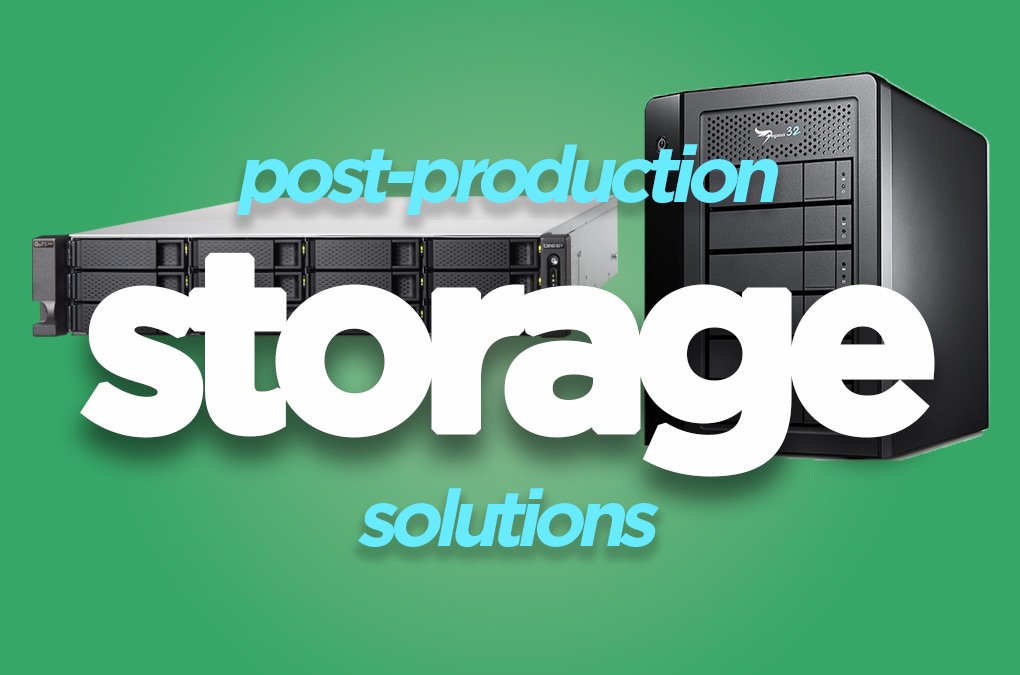
DigiProTips

